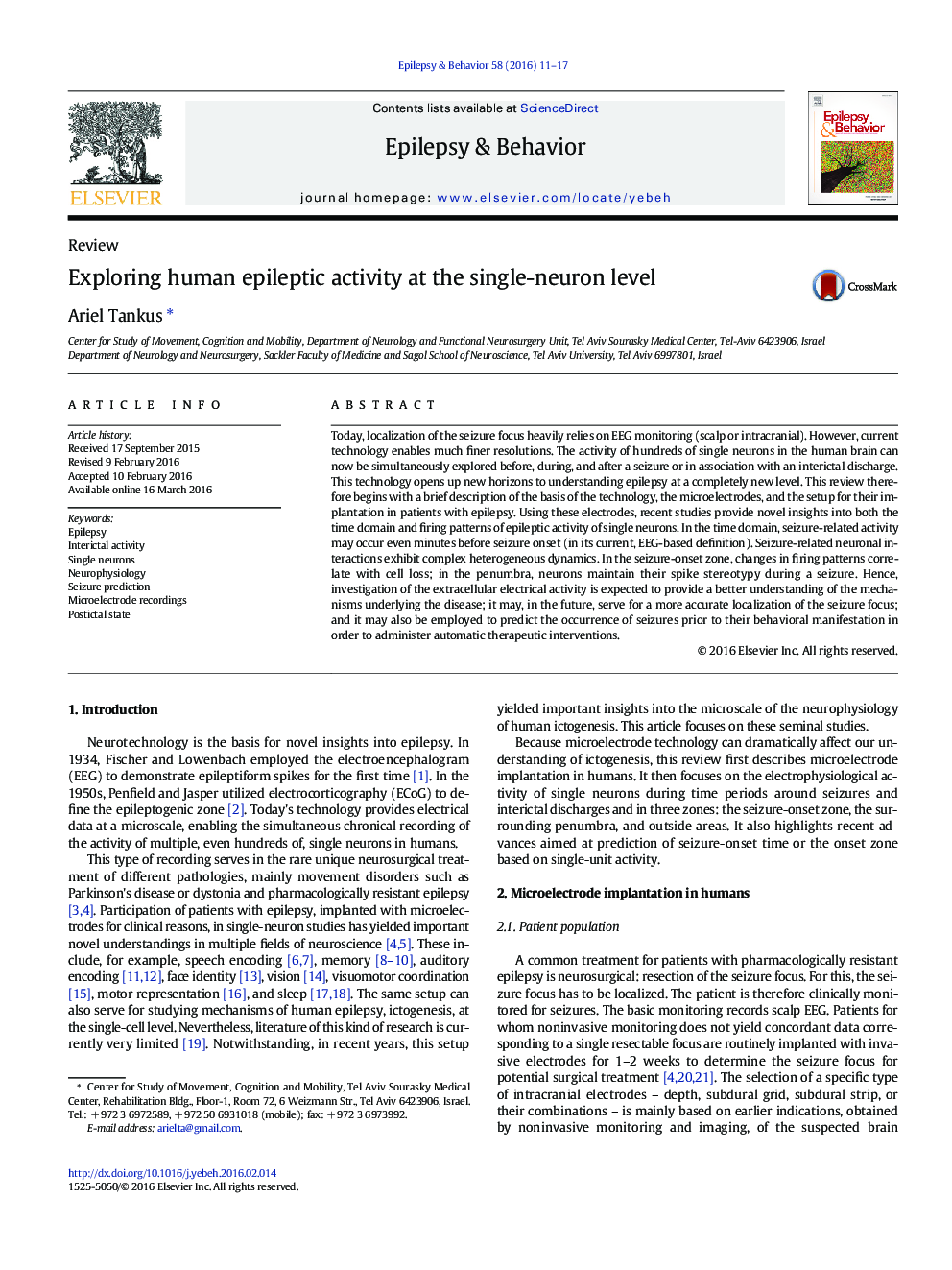| Article ID | Journal | Published Year | Pages | File Type |
|---|---|---|---|---|
| 6010155 | Epilepsy & Behavior | 2016 | 7 Pages |
â¢Epileptic activity of single neurons may precede the seizure by minutes.â¢Seizure-related interactions between neurons show complex heterogeneous dynamics.â¢Neurons in the penumbra maintain their spike stereotypy during the seizure.â¢Cell loss correlates with changes in firing patterns and memory deficits.â¢Seizure prediction based on single-neuron recordings is in its early stage.
Today, localization of the seizure focus heavily relies on EEG monitoring (scalp or intracranial). However, current technology enables much finer resolutions. The activity of hundreds of single neurons in the human brain can now be simultaneously explored before, during, and after a seizure or in association with an interictal discharge. This technology opens up new horizons to understanding epilepsy at a completely new level. This review therefore begins with a brief description of the basis of the technology, the microelectrodes, and the setup for their implantation in patients with epilepsy. Using these electrodes, recent studies provide novel insights into both the time domain and firing patterns of epileptic activity of single neurons. In the time domain, seizure-related activity may occur even minutes before seizure onset (in its current, EEG-based definition). Seizure-related neuronal interactions exhibit complex heterogeneous dynamics. In the seizure-onset zone, changes in firing patterns correlate with cell loss; in the penumbra, neurons maintain their spike stereotypy during a seizure. Hence, investigation of the extracellular electrical activity is expected to provide a better understanding of the mechanisms underlying the disease; it may, in the future, serve for a more accurate localization of the seizure focus; and it may also be employed to predict the occurrence of seizures prior to their behavioral manifestation in order to administer automatic therapeutic interventions.
